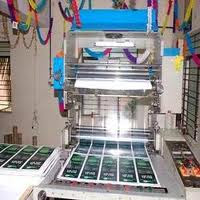

Brown paper bags are special kinds of paper sacks that are usually used in carrying all sorts of items. They are among the best sacks used for packaging purposes.
Features of the Brown Paper Bags
These bags usually have single layers in the way they are manufactured. They normally have one opening at their sides through which items are inserted into them for proper packaging. The bags are made of quality nylon and paper products that are very strong. In most instances, they are usually very light in texture, hence, they are meant for packaging light items.
Brown Paper Bags for Business Promotion
Brown bags are very useful for business promotions. various companies and business outfits friendly ways of promoting their business to higher levels. Companies can print their brand symbols on the bags and then use them to package their products. This is usually the case with companies that are into the production of various items that need proper packaging. For instance, if your company is producing food ingredients, you can make use of the bags in packaging the product in various shapes. Such bags can bear the name and symbol of your company. This helps a lot in advertising your company's product.
Customizing Brown Paper Bags
You can customize brown bags to suit your special purposes. In most cases, the bags are easily customized in various ways. You can use them to print your special business logo. You can also engrave or print promotional messages on the bags. The customization can also include your contact information, email address, website and a short list of the products and services you're rendering to the public.
In most cases, the customization process is better achieved when you liaise with the company that produces quality such bags. Such company can easily produce customized bags that bear all the necessary information concerning your business.
Brown Paper Bags for daily use
Just like paper carry bags, These bags are also used for daily purposes by almost everybody on planet earth. There's no end to the list of item that could be carried or packaged with the bags. If you're a retail business person, you can easily make use of the bags in selling whatever products you're marketing. People prefer to package any single item they buy from any shop. Simply put, these bags are for multipurpose. You can use them in carrying all sorts of light items without having any trouble on the way.
The Limitations of the Brown Paper bags
Although these bags are useful a lot, yet, they have their limitations. For instance, the bags are not meant for bulky items. Of course they are not strong like plastic bags and other multiwall paper bags. They are simply made for the packaging of light items such as food ingredients, vegetables, fruits, stationeries, bread, and other light items normally sold in the market.






